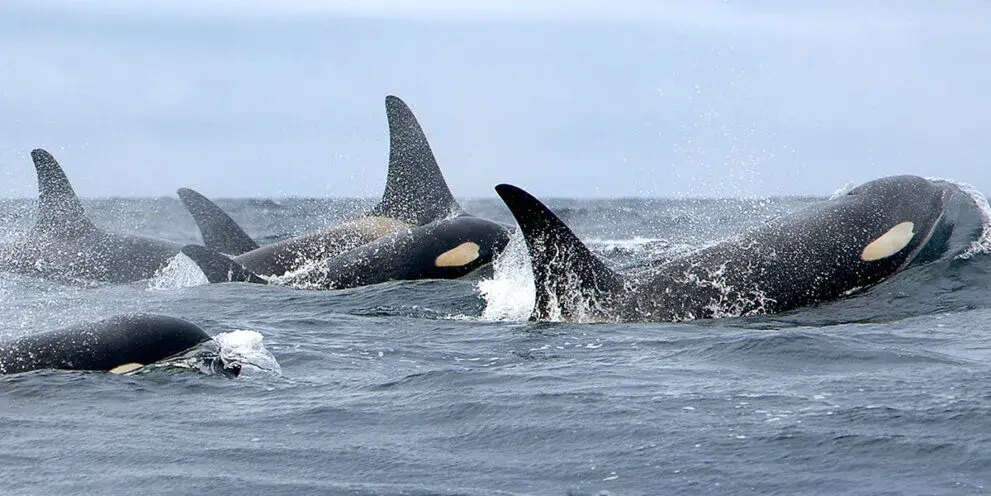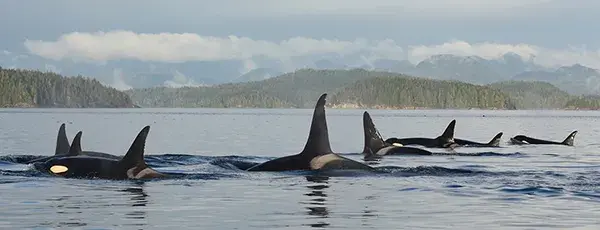Management measures by the federal government have been announced to protect southern resident killer whales who face imminent threats to their survival and recovery.
According to the Government of Canada, protecting the whales, that have important cultural significance for Indigenous peoples and coastal communities in British Columbia, requires comprehensive and immediate action.
The three primary threats to the remaining 74 southern resident killer whales are reduced prey availability and accessibility, acoustic and physical disturbance and contaminants.
Area-based fishing closures will be in effect for Swiftsure Bank, about 15 miles offshore on the west coast of Vancouver Island, from July 1 until Oct. 31, 2024 to protect prey availability for the whales. The closure includes no recreational or commercial fishing for salmon in this area.
The fishing closures are also in effect for Juan de Fuca Strait from Aug. 1 – Oct. 31, 2024, off the Gulf Islands from May 8 until Nov. 30, and at the mouth of the Fraser River from Aug. 1 to Sept. 30.
Chinook salmon are a vital food source for southern resident killer whales, but the species has declined dramatically in recent years, according to the Department of Fisheries and Oceans (DFO). Fishery management measures aim to help increase the availability of salmon in key southern resident killer whale feeding areas.
Paul Tate, fisheries manager for Ditidaht First Nation, said the fishing closures won’t affect the nation, but that chinook fishing is a very important part of life for Indigenous people.
“It can be part of a small opportunity for sales as well as food for our nation,” Tate said. “Our smokehouses are full of fish on reserve when the fish return. For our urban dwellers, we get some chinook sent to the processors as well as catching and processing ourselves.”
Tate said that Ditidaht fishers typically wait for the fish to return to the lake in August to gillnet them but some “fishermen do fish them in the ocean by hook and line using downriggers, rod and reel.”
Sabrina Crowley, a southern region biologist with Uu-a-thluk, said chinook salmon are one of the species that Nuu-chah-nulth nations rely on for food and ceremonial use, along with economic opportunities in the more abundant hatchery-influenced terminal areas.
“The naturally spawning west coast Vancouver Island chinook populations are a stock of concern,” Crowley said. “The Committee on the Status of Endangered Wildlife in Canada (COSEWIC) listed west Vancouver Island (South & Nootka and Kyuquot) population as threatened in 2020. There is currently a rebuilding plan for chinook salmon for west coast Vancouver Island underway.”
The DFO has also asked fishers to voluntarily stop fishing (don’t haul gear) within 1,000 metres of killer whales in all Canadian Pacific waters as a best practice in the presence of orcas to reduce competition for their food and to minimize disturbing the animals.
Other protection measures include having Interim Sanctuary Zones from June 1 to Nov. 30, 2024 in important areas for southern resident killer whales to further reduce acoustic and physical disturbance from vessels.
Vessel traffic (including fishing) will be prohibited in Interim Sanctuary Zones off North Pender and Saturna Islands as per the Interim Order enacted under the Canada Shipping Act. Some exceptions will apply, including emergency situations, vessels engaged in Indigenous food, social and ceremonial fisheries or Indigenous peoples exercising their existing rights.
From June 1 until Nov. 30, all vessels are required to slow down to a maximum of 10 knots around Swiftsure Bank.
To avoid whales, vessels must stay 400 metres away and not position a vessel in the path of a killer whale in southern B.C. coastal waters between Campbell River and north of Ucluelet until May 31, 2025. Boats with a purple ‘Authorized Vessel’ (AV) flag are allowed to be closer to killer whales that are not in the southern resident species.
The Marine Mammal Regulations remain in effect year-round. This requires staying 200 metres away from all killer whales in Canadian Pacific waters, 200 metres away from all whales, porpoises and dolphins when in resting position or with a calf and 100 metres away from other whales, porpoises and dolphins.


